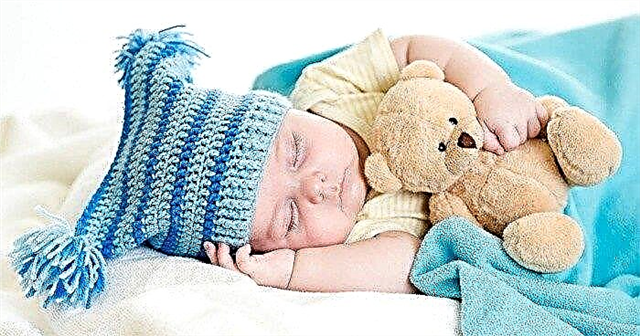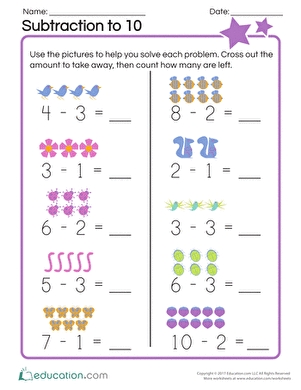
Bloody or whitish cracks in the corners of a child's mouth are a symptom of a fairly common disease that many have encountered, but not many know what it really is. About why angulitis develops and how to treat it, you will learn from this article.
What it is
Angulite has a more understandable popular name - "zayed". This inflammatory process, which affects the mucous membranes and corners of the mouth, has other names - angular stomatitis and angular cheilitis.
With illness, the child develops a characteristic lesion localized in the corner of the mouth. It can be quite large and bleeding or almost invisible.
Most often, angulitis appears in the spring, when vitamins are not enough, and the child's immunity is reduced after the cold season and past diseases. Very often, parents confuse me with herpes simplex, which can also appear on the lips.


There is a difference - with herpes, a watery rash appears, which then merges into a crust, and with angulitis, eczema does not go through the stage of the rash, and is localized strictly in the corners of the lips. Whereas a herpes infection can affect any place in the nasolabial triangle.

Causes
The causes of lesions in the corners of the mouth are streptococci... These microbes multiply and create painful cracks and crusts, which cause unpleasant sensations and spoil the appearance of the child. This angulitis is called streptococcal. Streptococci are widespread microbes, and it is not difficult to bring them into a small microcrack in the skin.
In second place among the reasons for picking up are candida fungi. They also live almost everywhere and infection is more than likely. This type of disease is called yeast or candidomycotic seizure. Microcracks and a favorable environment for these pathogens are usually formed against the background of a deficiency in the body of vitamin B2 (riboflavin), diabetes mellitus. And for the fungal form, the most likely precursor is long-term treatment of the child with antibiotics, corticosteroids and drugs - cytostatics.


Why a crack is formed, medicine can explain only at a stretch. Most often, this process is associated with skin folds that form in the corners of the mouth with a decreasing bite. And crack infection most often occurs when hygiene rules are not followed.
Symptoms
Streptococcal seizure proceeds somewhat differently than fungal. Attentive parents will be able not only to determine the signs of angulitis, but also to establish which pathogen caused the inflammatory process.
With the yeast form of the disease, lacquer red erosion forms in the corner of the child's mouth. Quite often, they are covered with a whitish or grayish coating. This film can be easily removed if desired. No crusts are formed on the erosion surface. And in general, she leads a rather "modest lifestyle", most of the time disguising herself in a skin fold in the corner of her lips.
Fungal angulitis can only be considered when the child's mouth is open. Very often, this inflammation is chronic - it appears and disappears. Remissions can be quite long, exacerbations occur with any decrease in immunity, acute respiratory viral infections, influenza, colds and other ailments and conditions.

Streptococcal angulitis begins with a bubble with a thin top layer in the corner of the lips. It bursts quickly and leaves a slit-like erosion. It's deep enough. In a matter of hours, erosion becomes covered with a purulent bloody crust. If this crust is removed, bloody erosion again forms under it with a noticeable crack in the very center. With such a jam, a child feels mild unpleasant "stretching" and a burning sensation at the moment when he opens his mouth.

The diagnosis of the disease is based on these symptoms alone. To confirm, the doctor makes scrapings from the erosion coating to find out who lives there - candida fungi or streptococci. This is essential for effective and fast treatment.
Additional diagnostics
If you go to a doctor with angulitis, then you should not be surprised that the doctor will write your child directions for tests that exclude the presence of congenital or acquired syphilis in the baby.
The fact is that eczema with angular stomatitis is very similar to similar formations around the mouth with syphilis, differing only in the density of the formations. It is for this reason that additional tests for syphilis should not embarrass and outrage moms and dads.
A thoughtful pediatrician will also give a referral for a biochemical blood test, which will allow you to see if the child has a pronounced deficiency of vitamins, in particular, vitamin B.

Treatment
Most often, children have a bacterial (streptococcal) form of angulitis. But yeast is also not considered an exceptional phenomenon. Treatment for these forms of seizure will differ in the main direction of therapy. In the first case, it will be necessary to destroy the bacteria and prevent further infection, and in the second, antifungal treatment is prescribed, since antibiotics are mostly ineffective against fungi.
Yeast angulite
The most popular drug for such a jam is "Fukortsin". This is a saturated raspberry solution, which is also called Castellani's solution. The drug has a pronounced antiseptic and antifungal effect. They are advised to smear the lesion site 2-3 times a day, and wipe the rest of the space around the mouth with any antiseptic to prevent the spread of fungal colonies.

"Fukortsin" is used as part of a complex treatment with one of the antifungal ointments. Most often, children are prescribed "Nystatin ointment" or "Levorin ointment". "Sulfur-salicylic ointment" (in a 2% concentration of the active substance) also has good efficacy for fungal skin lesions. Along with local treatments, the intake of vitamins of group B is prescribed. Riboflavin (B2) and nicotinic acid (PP) work in the best way.

If angulitis is not in too much of a hurry to succumb to such therapy, and the seizure does not decrease, the doctor may recommend the child to take "Fluconazole". This systemic antifungal drug is given at an individual dosage that depends on the age and weight of the child. The average dose is calculated from the formula “6 mg of the drug per kilogram of body weight” on the first day of treatment, and then only 3 mg of the drug is multiplied for each kilogram. Infants are given "Fluconazole" every three days, all others - once a day.

On average, the treatment of a yeast jam takes about 10-14 days. After recovery, the course should be continued for about 7-10 days in order to achieve a lasting result, since fungal infections tend to return even with a minimal number of microorganisms that survived during the first course of treatment.
Streptococcal angulitis
To combat streptococcus that has settled in the corners of the lips, local antiseptics are most often used, which are alcohol solutions of aniline dyes, for example, a solution of brilliant green (brilliant green). Of course, the child will look somewhat intimidating, but this is not for long - streptococcal infections are easier to treat than fungal infections. In combination with brilliant green, antibiotic ointment is prescribed. Usually in pediatric practice, "Erythromycin ointment" or "Synthomycin ointment" is used.

The use of Vishnevsky's ointment for the treatment of jam was not so long ago considered effective. Now, medicine looks critically at therapy with the use of this remedy - Vishnevsky's ointment is quite toxic and is not suitable for use on mucous membranes.
Systemic intake of antibiotics inside (in tablets, syrups, injections), this diagnosis usually does not require, the local action of antibacterial drugs is enough for a complete cure in 7-10 days. By analogy with yeast angulitis, in the bacterial form of the disease, vitamin preparations are also prescribed, containing vitamins A, E, C, PP and B2 in a sufficiently large amount.
Nutrition during treatment
Therapy will be more effective if the child adheres to a certain diet.
It is imperative to add foods rich in vitamin B to the diet of a baby with angulite (liver, cabbage, apples, dairy products, egg yolk, poultry meat, sea fish). It is better to refuse from the nuts, which contain the desired vitamin the most, because the nuts themselves can cause quite a strong allergy.

At the time of treatment, as well as during the recovery period (about a month), spicy and salty dishes, fried foods, food with the addition of spices and food colors should be excluded from the baby's menu. These products additionally irritate and injure the affected mucous membrane in the corners of the mouth. When treating fungal angulitis, it is better to refrain from taking yeast and baking from yeast dough.
Folk remedies
Not all folk remedies, recipes for which can be found in large quantities on the Internet, are equally good and useful for angulitis in a child. So, the recommendations to lubricate the corners of the lips with sunflower, butter, seem rather dubious. Indeed, in a warm and oily environment, bacteria and fungi do not die.


Official medicine looks more favorably on the use of sea buckthorn oil for lubricating dry crust in case of bacterial disease. Sea buckthorn oil has a certain antimicrobial effect. However, this does not change the primary treatment, which should include antibiotics and antiseptics. Another important condition is that you can use sea buckthorn oil not in the acute stage of angulitis, but already at the stage of recovery.
Strong green tea and aloe juice are often used as natural antiseptics.
Prevention
- For prevention seizures, it is important to ensure that the child does not bite or chapped lips. To do this, you can teach your baby to use vaseline oil or special hygienic lipstick for children.
- Watch your mouth - Untreated or untreated caries at times increases the likelihood of contracting the streptococcal form of angulitis.
- You should spare no effort and time to strengthen children's immunity.... Against the background of immunodeficiency, angular stomatitis occurs much more often. To strengthen the immune defense of the child, you need to properly and balanced feed, make sure that he has enough vitamins and minerals, temper him, take him to the sports section and walk with him in the fresh air as often as possible.
Dermatologist G.V. will tell you about what you need to know about biting in children. Menshchikova in the next video.



